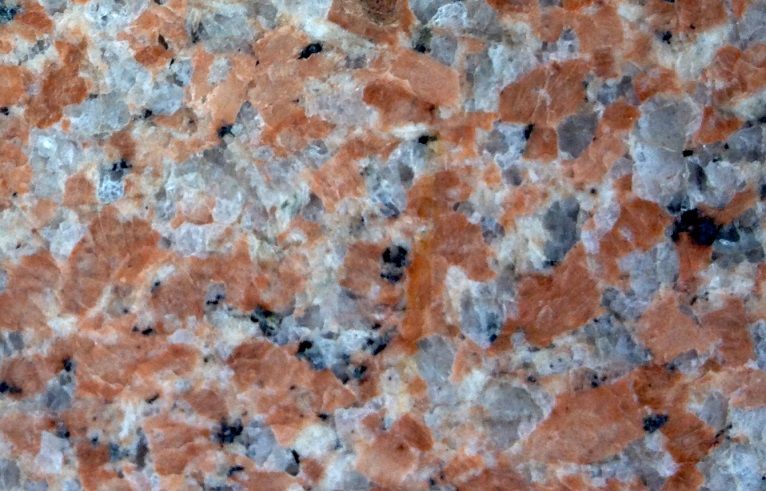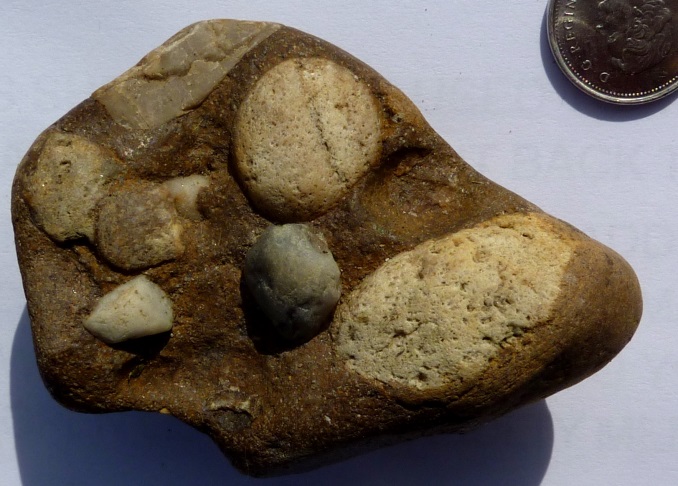8.4 Isotopic Dating Methods
Originally fossils only provided us with relative ages because, although early paleontologists understood biological succession, they did not know the absolute ages of the different organisms. It was only in the early part of the 20th century, when isotopic dating methods were first applied, that it became possible to discover the absolute ages of the rocks containing fossils. In most cases, we cannot use isotopic techniques to directly date fossils or the sedimentary rocks they are found in, but we can constrain their ages by dating igneous rocks that cut across sedimentary rocks, or volcanic layers that lie within sedimentary layers.
Unstable Isotopes

Isotopic dating of rocks, or the minerals in them, is based on the fact that we know the decay rates of certain unstable isotopes of elements and that these rates have been constant over geological time. It is also based on the premise that when the atoms of an element decay within a mineral or a rock, they stay there and don’t escape to the surrounding rock, water, or air. One of the isotope pairs widely used in geology is the decay of 40K to 40Ar (potassium-40 to argon-40). 40K is a radioactive isotope of potassium that is present in very small amounts in all minerals that have potassium in them. It has a half-life of 1.3 billion years, meaning that over a period of 1.3 Ga one-half of the 40K atoms in a mineral or rock will decay to 40Ar, and over the next 1.3 Ga one-half of the remaining atoms will decay, and so on (Figure 8.4.1).
Dating Igneous and Metamorphic Rocks
In order to use the K-Ar dating technique, we need to have an igneous or metamorphic rock that includes a potassium-bearing mineral. One good example is granite, which normally has some potassium feldspar (Figure 8.4.2). Feldspar does not have any argon in it when it forms. Over time, the 40K in the feldspar decays to 40Ar. Argon is a gas and the atoms of 40Ar remain embedded within the crystal, unless the rock is subjected to high temperatures after it forms. The sample must be analyzed using a very sensitive mass-spectrometer, which can detect the differences between the masses of atoms, and can therefore distinguish between 40K and the much more abundant 39K. Biotite and hornblende are also commonly used for K-Ar dating.


An important assumption that we have to be able to make when using isotopic dating is that when the rock formed none of the daughter isotope was present (e.g., 40Ar in the case of the K-Ar method). A clastic sedimentary rock is made up of older rock and mineral fragments, and when the rock forms it is almost certain that all of the fragments already have daughter isotopes in them. Furthermore, in almost all cases, the fragments have come from a range of source rocks that all formed at different times. If we dated a number of individual grains in the sedimentary rock, we would likely get a range of different dates, all older than the age of the rock. That could be useful information, but it would not provide an accurate date for the rock in question.
It might be possible to directly date some chemical sedimentary rocks isotopically, but there are no useful isotopes that can be used on old chemical sedimentary rocks. Radiocarbon dating can be used on sediments or sedimentary rocks that contain carbon, but it cannot be used on materials older than about 60 ka.
K-Ar is just one of many isotope-pairs that are useful for dating geological materials. Some of the other important pairs are listed in Table 8.2, along with the age ranges that they apply to and some comments on their applications. When radiometric techniques are applied to metamorphic rocks, the results normally tell us the date of metamorphism, not the date when the parent rock formed.
| [Skip Table] | |||
| Isotope System | Half-Life | Useful Range | Comments |
|---|---|---|---|
| Potassium-argon | 1.3 Ga | 10 Ka to 4.57 Ga | Widely applicable because most rocks have some potassium |
| Uranium-lead | 4.5 Ga | 1 Ma to 4.57 Ga | The rock must have uranium-bearing minerals, but most have enough. |
| Rubidium-strontium | 47 Ga | 10 Ma to 4.57 Ga | Less precision than other methods at old dates |
| Carbon-nitrogen (a.k.a. radiocarbon dating) | 5,730 years | 100 to 60,000 years | Sample must contain wood, bone, or carbonate minerals; can be applied to young sediments |
Dating Sedimentary Rocks
Carbon-14 is continually generated as solar radiation bombards the atmosphere. Neutrons are ejected in the upper atmosphere, and are captured by Nitrogen nuclei, which causes the nitrogen to turn into carbon. Over time, 14C will change back into nitrogen, with a half-life of 5,730 years. All living things absorb carbon from food sources and the atmosphere. When an organism dies, it will no longer absorb 14C, and the amount present will revert to nitrogen. By analyzing how much 14C is present in a once living organism, we can calculate how long ago something died up until about 60ka. Radiocarbon dating (using 14C) can be applied to many geological materials, including sediments and sedimentary rocks. Fragments of wood incorporated into young sediments are good candidates for carbon dating, and this technique has been used widely in studies involving late Pleistocene glaciers and glacial sediments.
Over the past decade there has been increasing use of U-Pb dating to study sedimentary rocks, not necessarily to find out the age of the rock, but to discover something about its history and origins. All clastic sedimentary rocks contain some tiny clasts of the silicate mineral zircon (ZrSiO4), derived from the weathering of the sediment parent rocks. Zircon always has some uranium in it (but no lead) so it is a good candidate for U-Pb dating, and it isn’t too difficult to separate the grains of zircon from the other grains in a sandstone. The procedure is to isolate a few hundred tiny zircons from a rock sample, and then carry out U-Pb dating on each one of them.
***See 8.7 for Text and Media Attributions
One of two or more species of the same chemical element, i.e., having the same number of protons in the nucleus, but differing from one another by having a different number of neturons
the geological epoch that lasted from about 2,580,000 to 11,700 years ago

